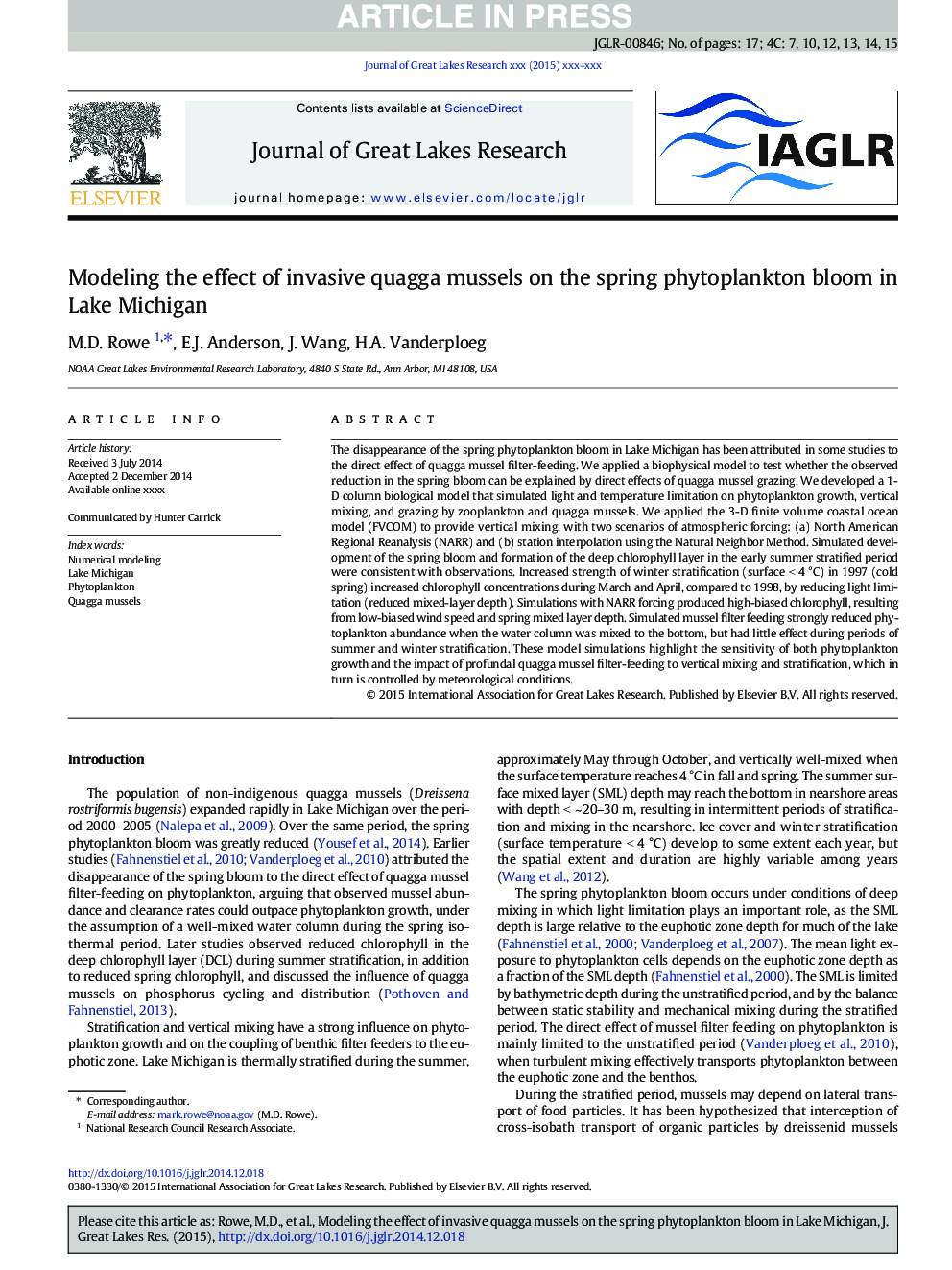| Article ID | Journal | Published Year | Pages | File Type |
|---|---|---|---|---|
| 6304903 | Journal of Great Lakes Research | 2015 | 17 Pages |
Abstract
The disappearance of the spring phytoplankton bloom in Lake Michigan has been attributed in some studies to the direct effect of quagga mussel filter-feeding. We applied a biophysical model to test whether the observed reduction in the spring bloom can be explained by direct effects of quagga mussel grazing. We developed a 1-D column biological model that simulated light and temperature limitation on phytoplankton growth, vertical mixing, and grazing by zooplankton and quagga mussels. We applied the 3-D finite volume coastal ocean model (FVCOM) to provide vertical mixing, with two scenarios of atmospheric forcing: (a) North American Regional Reanalysis (NARR) and (b) station interpolation using the Natural Neighbor Method. Simulated development of the spring bloom and formation of the deep chlorophyll layer in the early summer stratified period were consistent with observations. Increased strength of winter stratification (surface < 4 °C) in 1997 (cold spring) increased chlorophyll concentrations during March and April, compared to 1998, by reducing light limitation (reduced mixed-layer depth). Simulations with NARR forcing produced high-biased chlorophyll, resulting from low-biased wind speed and spring mixed layer depth. Simulated mussel filter feeding strongly reduced phytoplankton abundance when the water column was mixed to the bottom, but had little effect during periods of summer and winter stratification. These model simulations highlight the sensitivity of both phytoplankton growth and the impact of profundal quagga mussel filter-feeding to vertical mixing and stratification, which in turn is controlled by meteorological conditions.
Related Topics
Physical Sciences and Engineering
Earth and Planetary Sciences
Earth and Planetary Sciences (General)
Authors
M.D. Rowe, E.J. Anderson, J. Wang, H.A. Vanderploeg,
